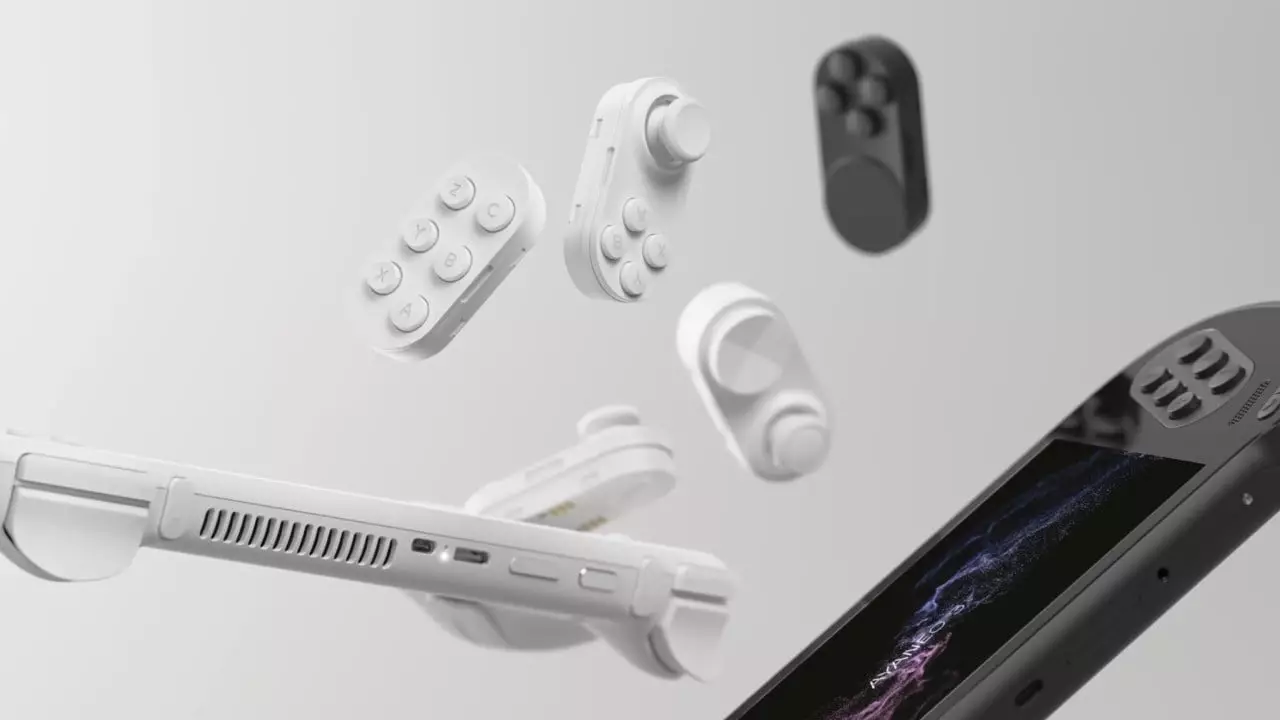As discussions heat up in the gaming community about the anticipated successor to the Nintendo Switch, one thing is abundantly clear: speculation reigns. While recent leaks have provided tantalizing glimpses of what the Switch 2 may entail, we remain in a state of uncertainty regarding its final form. It is widely expected that Nintendo will stick to the tried-and-true tablet-like design, complete with detachable controllers, but that doesn’t mean the gaming giant should shy away from innovative features that could enhance user experience. Enter AYANEO, a Chinese company that has carved a niche for itself by producing high-performance Windows-based handheld gaming PCs. The recent unveiling of their AYANEO 3 has caused quite a stir, particularly due to its novel “Magic Modules.”
The AYANEO 3’s Magic Modules stand out as a groundbreaking feature in the handheld gaming landscape. These customizable modules allow players to swap out controllers based on their preferences—whether they favor repositioning analog sticks, adding a D-pad, or configuring buttons for fighting games. This kind of modularity not only enhances gameplay but also caters to diverse gaming styles, allowing individualized setups that could revolutionize player interaction. Such flexibility speaks directly to a growing demand for personalization in gaming hardware, challenging other manufacturers to reconsider their designs.
Historical Context: Nintendo’s Customization Potential
In examining AYANEO’s innovation, it’s crucial to reflect on Nintendo’s historical commitment to customization. The original Switch laid the groundwork for a different kind of modularity, previously seen in products like Hori’s D-pad Joy-Con. While it provided users with alternative configurations, this potential was largely untapped throughout the Switch’s lifespan. Despite the innovation presented by third-party creators, most of the Switch’s accessories leaned heavily on aesthetics and minor functional adjustments rather than offering true modular gameplay experiences. Could this be an opportunity for Nintendo to lead again?
As Nintendo continues to develop the Switch 2, the company faces a crucial decision: Will they stick with tradition, or will they dare to innovate? Embracing modularity could greatly enhance the appeal of the next-gen console, particularly to competitive gamers and enthusiasts looking for customized settings. However, the risk of alienating their core audience—who might prefer simplicity and familiarity—cannot be overlooked. The challenge lies in striking a balance between tradition and innovation that caters to both casual players and serious gamers.
Ultimately, the introduction of features like AYANEO’s Magic Modules presents an exciting possibility for Nintendo’s future hardware designs. As the gaming landscape continues to evolve, the demand for customization will likely grow, making it essential for companies to listen to their user base. Offering players the ability to tailor controls could not only enhance gaming experiences but also ensure that Nintendo remains at the forefront of innovation. There’s every reason to hope that the Switch 2 will embrace this challenge, setting a new standard for gaming consoles and inspiring future designs.

